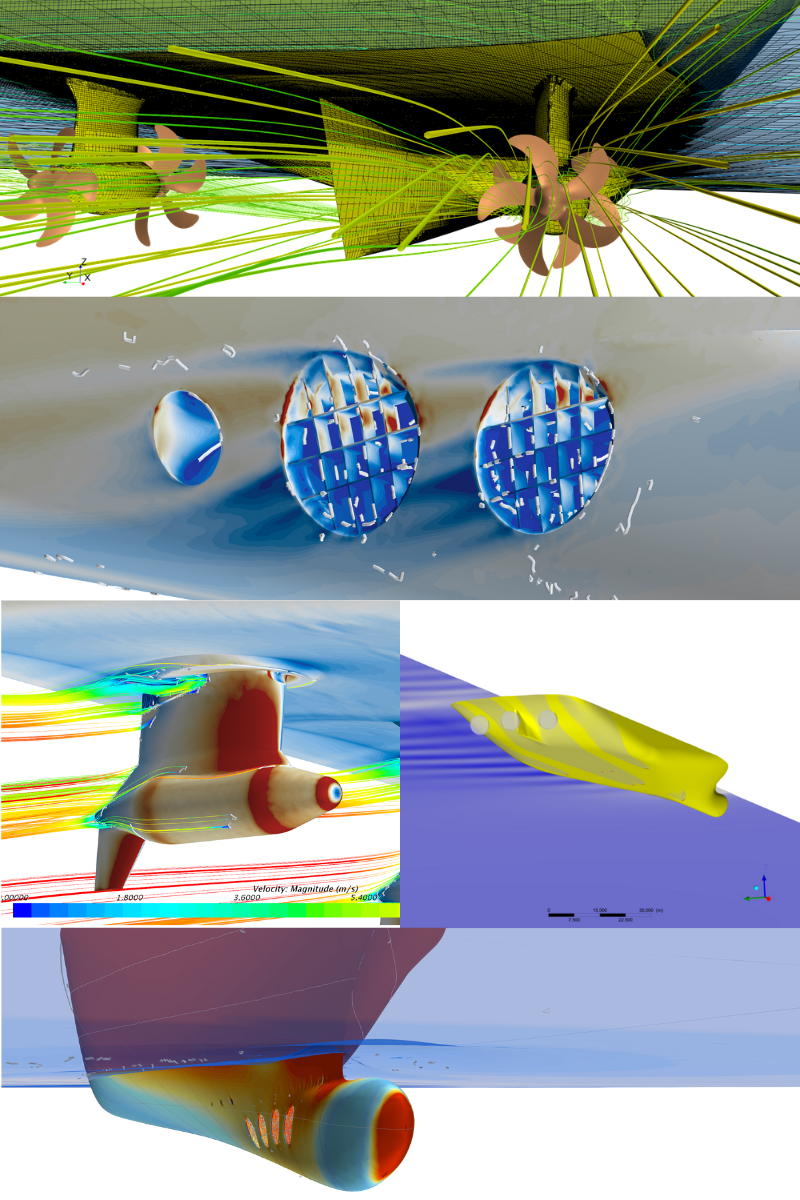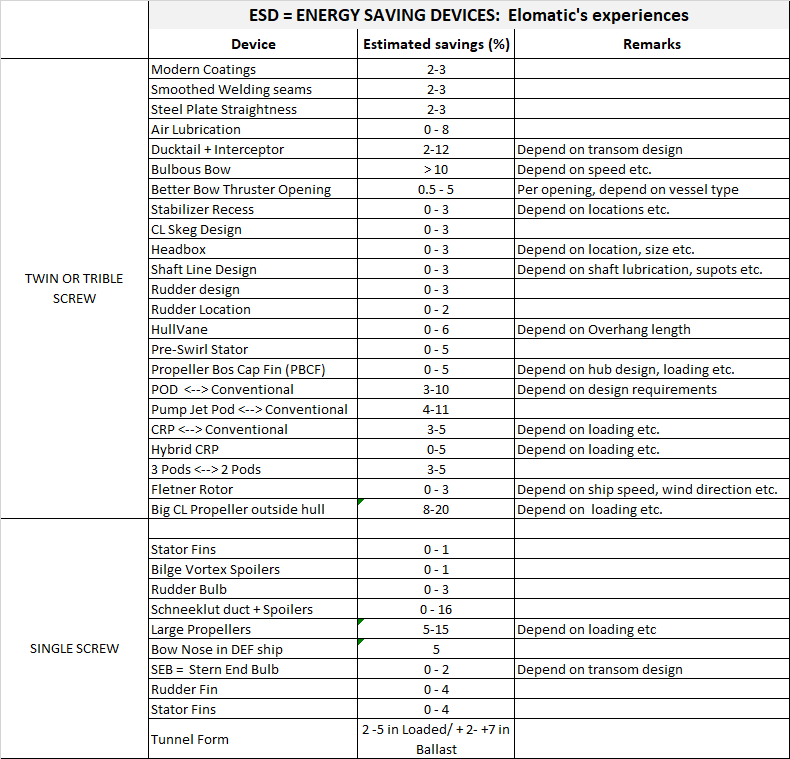24/04/2020
Fuel savings through hydrodynamic improvements
A typical cargo ship that operates 24 h/day and 300 days a year uses about 95 % of its energy for propulsion. Fuel consumption for propulsion is 28 800 ton-MGO/year/ship, which translates to annual fuel expenses of $ 17 280 000 (Notteboom, T. and P. Carriou (2009)).
The fuel price naturally varies over time, however $600/mt has been used in this calculation. According to https://shipandbunker.com/prices, the fuel price level dropped by about 50% at the mid-point of the corona crisis.
Very high fuel consumption figures can be reached for other types of ships as well. In cruise liners, where energy for propulsion accounts for 50 to 65 % of total energy use, fuel consumption is typically between 12 000 t/year (small) to 35 000 t/year (big). This translates to between 6 000 000 USD/year to 20 000 000 USD/year. The hotel load in cruise liners is typically between 10 – 20 % of total energy use.
Another important aspect is that the amount of CO2 emissions are higher than the amount of fuel consumed; approximately one ton of fuel produces three tons of CO2 emissions. The following equation with molecular weights indicates the amount of CO2 produced by a simple carbon and oxygen reaction:
C + O2 = CO2
12 32 44 (molecular weight)
Based on these numbers, even a 1% saving can lead to significant savings in operational costs and emissions. The annual savings potential is highly dependent on several factors, such as the vessel tonnage, cruise speed and time at sea service – for a typical cargo ship that would be $172 800/a. In cruise liners, a 1% saving contributes 50 000 – 180 000 USD/year.
Most of a ship’s energy is spent on moving the ship from one place to another, and hydrodynamics plays the most important role in this respect – as much as 50 – 95 % of all energy used on a ship is for propulsion.
The highest potential for upgrading ship hydrodynamics to today’s level is naturally in older ships designed a few years ago. The development in ship hull optimization has been rapid in recent years thanks to increased computational power available and improved software quality. A major part of today’s ship hull, appendage and propulsion optimization can be done using computational fluid dynamics (CFD) simulations in big computer clusters. Only the final solution needs to be tested in a model basin.
Elomatic draws on its extensive ship design experience and vast range of products and services to improve ship hydrodynamics. The development work is done by a modern-day technical analysis team with the capability to solve massive ship fluid dynamic calculations to find optimal designs in a reasonable timeframe and work load. If the exact ship hull lines are not known for some reason or another on a retrofit project, Elomatic has vast in-house experience of laser scanning that can be utilized to scan ship hull lines during drydocking for further CFD calculations.
A typical case for upgrading an existing ship hull would include first researching the existing data from the ship operational parameters and economy.

In order to know the present status of hull hydrodynamics, the existing design should be simulated with all relevant appendages to provide information for fuel saving potential. If propulsion is an option for upgrading, that should be included in the study.
In the third step, design modifications are made for the appendages and/or hull design and tested with CFD – in this process simulations are used to reach the optimal design for the components that need to be upgraded.
The highest potential for old hull design upgrades is typically found in the bow section, including bulbous bow shapes and thruster tunnels – modifications to these local structures can yield up to a 7 % reduction in fuel consumption. Reductions of a few percentage points are possible in mid ship sections with improvements to bilge keels and fin stabilizers. Air lubrication can have the greatest effect on the flat bottom area by reducing the friction in that region leading to an approximately 5 – 8 % net impact. In the stern section, upgrading the propulsion itself can lead to significant savings. Wave production in the stern can also be reduced with duck tail and interceptor designs. Improvements to the stern section can lead to reduction of about 7%.
There are many different energy saving devices available, and if properly designed and optimized, they can improve the vessel performance as well. For example, propeller boss cap fins can yield savings of up to 5%. Examples of different upgrades with savings estimations are listed in the table below.

All the improved components naturally have parallel impacts, so they are not added together if all alternatives are employed.
Based on the saving potential with upgraded design, the payback time is calculated for the investment needed. A suggestion for the ship owner can be drawn up based on the estimated payback time, and if it is viewed as economically feasible, final drawings for production of the upgraded components can be delivered to the ship owner. The manufacturing can be completed at any capable yard. Elomatic can supervise the manufacturing process to ensure the required quality of the upgraded components.
After the modifications have been done, the upgrade follow-up is conducted by comparing the ship fuel consumption to the values before the process.
In cases where there are numerous similar ships in a fleet, the upgraded design can be utilized to cover all the ships, thereby multiplying savings by the number of ships being upgraded. The Elomatic update of drawings for the specified ships is still required, as well as manufacturing supervision.
Want to know more?
Elogrid
Elogrid is a cutting-edge solution crafted by our team, dedicated to maximizing energy efficiency and minimizing environmental impact in maritime operations. By seamlessly integrating advanced engineering methods and innovative design principles, Elogrid offers a multifaceted approach to enhancing vessel performance.
Fluid Dynamics
With our Computational Fluid Dynamics (CFD) services, you can analyze the fluid dynamics and heat or mass transfer of fluids and thereby develop your products. You also save time and money.

